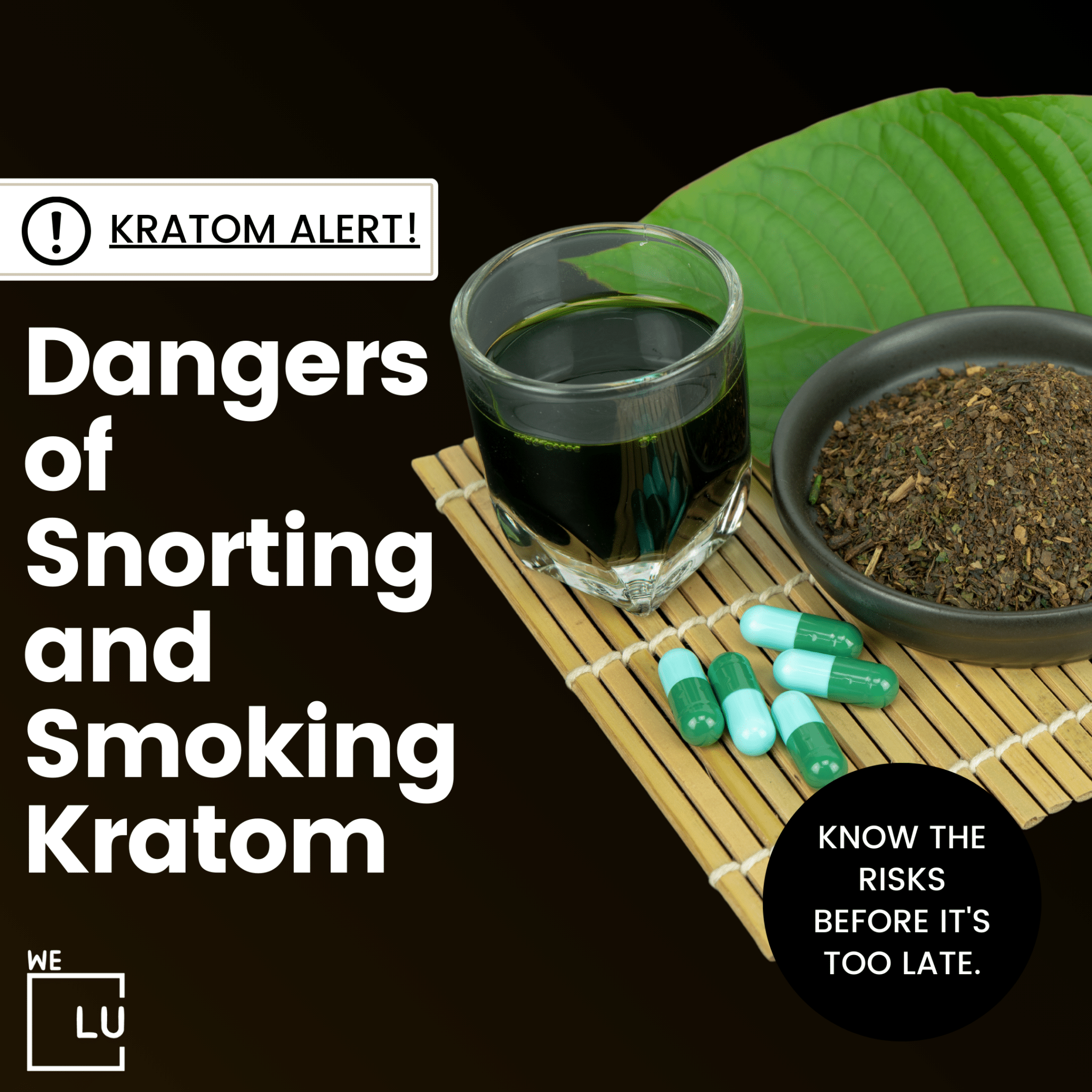When faced with the decision between morphine and Dilaudid (hydromorphone), healthcare providers carefully consider various factors to optimize pain management while minimizing potential risks. Both medications, belonging to the opioid class, alleviate moderate to severe pain, yet they differ in potency, onset, and duration of action. The choice hinges on individual patient needs, the nature of the pain, and responsiveness to each drug. However, the potent nature of opioids demands caution, as their use is associated with the risk of side effects, tolerance, dependence, and addiction.
If you or a loved one is grappling with opioid-related concerns or addiction, seeking professional guidance is crucial. We Level Up CA is here to provide support and assistance in navigating the complexities of opioid use and addiction. Contact us to embark on a path toward informed decisions and comprehensive care.
Dilaudid Vs Morphine.
What Is Dilaudid?
Dilaudid, also known by its generic name hydromorphone, is a potent opioid analgesic medication primarily used to manage severe pain. It belongs to the opioid class of drugs, which exert their effects by binding to specific receptors in the central nervous system, particularly the mu-opioid receptors in the brain and spinal cord. The drug is derived from morphine and is considered to be approximately five to ten times more potent. Dilaudid is commonly prescribed in various formulations, including tablets, oral solutions, and injectable forms, to address acute pain following surgery, injury, or for patients with chronic pain conditions.
While Dilaudid is effective in providing rapid pain relief, it also carries a high potential for abuse and dependence. As with all opioids, its use is associated with side effects such as drowsiness, dizziness, constipation, and respiratory depression, the latter being a severe concern at higher doses. Due to the risk of addiction and overdose, healthcare providers carefully assess patients before prescribing Dilaudid and monitor its use closely.
Uses of Dilaudid (Hydromorphone)
- Postoperative Pain: Dilaudid is often used to manage acute pain after surgical procedures.
- Severe Injury: It may be prescribed for pain relief following severe injuries, such as fractures or trauma.
- Cancer-Related Pain: Dilaudid can be used to alleviate pain in cancer patients, especially when pain is not adequately controlled with other medications.
- Chronic Pain: In some cases, Dilaudid may be used to manage chronic pain conditions when other treatments are ineffective.
What Is Morphine?
Morphine is a potent opioid analgesic derived from the opium poppy plant, commonly used to manage moderate to severe pain. It belongs to the class of medications known as opioids, which exert their effects by binding to specific receptors in the central nervous system called mu-opioid receptors. By doing so, morphine alters the perception of pain and produces a pain-relieving (analgesic) effect.
Typically administered orally, through injection, or via other routes, morphine is a cornerstone in pain management for various medical conditions, including post-surgical recovery, cancer-related pain, and severe injuries. The drug provides relief by suppressing the transmission of pain signals and altering the brain’s interpretation of those signals.
However, morphine is associated with potential side effects, including drowsiness, constipation, nausea, and respiratory depression. Moreover, it carries a risk of tolerance, dependence, and addiction, necessitating careful medical supervision and adherence to prescribed dosages. Medical professionals exercise caution when prescribing morphine, carefully weighing its benefits against the potential risks and considering alternative pain management strategies when appropriate.
Uses of Morphine
- Postoperative Pain: Morphine is commonly used for pain management after surgical procedures.
- Cancer Pain: Like Dilaudid, morphine is frequently used to relieve pain in cancer patients, particularly when the pain is severe.
- Acute Pain: It may be prescribed for acute pain due to injuries, burns, or other medical conditions.
- Chronic Pain: Morphine can be employed in the management of chronic pain, especially when other pain medications are not providing sufficient relief.
Is Dilaudid Morphine?
Dilaudid (generic name: hydromorphone) and morphine are both opioid analgesics, meaning they belong to the same broad class of drugs derived from the opium poppy plant and are used for pain relief. However, they are distinct medications with some differences.
The main difference lies in their potency. Hydromorphone (Dilaudid) is considered to be more potent than morphine. It’s estimated to be approximately five to ten times more powerful than morphine on a milligram-per-milligram basis. This increased potency means that smaller doses of hydromorphone may be needed to achieve the same level of pain relief as morphine.
Both drugs work by binding to mu-opioid receptors in the central nervous system, altering the perception of pain. However, because of their differences in potency and pharmacokinetics, they may be prescribed in different situations or for varying levels of pain intensity.
Is Dilaudid Equivalent To Morphine?
Dilaudid (hydromorphone) and morphine are both opioid analgesics, but they are not considered equivalent on a one-to-one basis in terms of potency. Hydromorphone, the active ingredient in Dilaudid, is generally considered to be more potent than morphine.
Is There a Dilaudid To Morphine Conversion?
The exact potency ratio can vary, but it’s often estimated that 1 milligram of hydromorphone (Dilaudid) is roughly equivalent to 5 to 10 milligrams of morphine. This means that smaller doses of hydromorphone may produce similar analgesic effects as larger doses of morphine.

Skip To:
Learn More:
- Morphine Vs Oxycodone, Is Morphine Stronger Than Oxycodone?
- Dilaudid Vs Oxycodone, Which Is Better For Pain Management?
- Dilaudid side effects, Less and Most Common Side Effects, Overdose, Addiction & Treatment
- Dilaudid Addiction, Specifics, Abuse, Signs of Addiction, Overdose & Treatment
- Dilaudid Detox, Addiction, Effects of Abuse, Withdrawal Symptoms, Duration, Timeline & Overdose Signs
- Morphine Addiction, Signs, Symptoms, And Treatments
- Morphine Withdrawal Symptoms, Timeline, Detox, & Treatments
- What Is A Morphine Overdose? Symptoms, Treatment, & Factors

Get Your Life Back
Find Hope & Recovery. Get Safe Comfortable Detox, Addiction Rehab & Dual Diagnosis High-Quality Care.
Hotline (855) 695-1160
Morphine Versus Dilaudid What’s the Difference?
Morphine and Dilaudid (hydromorphone) are both opioid analgesics used to manage pain, but they have some differences, primarily in potency and the rate at which the body absorbs the medicines:
- Potency: One of the main distinctions between the two is potency. Hydromorphone (Dilaudid) is considered more potent than morphine. The potency ratio is often estimated to be 1:5 to 1:10, meaning that 1 milligram of hydromorphone is roughly equivalent to 5 to 10 milligrams of morphine. Due to this increased potency, smaller doses of Dilaudid may be needed to achieve similar pain relief compared to morphine.
- Onset and Duration of Action: Dilaudid often has a faster onset of action than morphine, providing more rapid pain relief. Additionally, Dilaudid tends to have a shorter duration of action compared to morphine.
- Metabolism: Both drugs undergo metabolism in the liver, and the kidneys eventually excrete their metabolites. The specific metabolic pathways and elimination half-lives, however, can differ.
- Forms of Administration: Morphine and Dilaudid are available in various formulations, including oral tablets, injectable forms, and sometimes extended-release formulations. The choice of formulation depends on the patient’s condition and the desired duration of pain relief.
- Clinical Use: Both medications are used for the management of moderate to severe pain, such as post-surgical pain, cancer-related pain, and other chronic pain conditions. The choice between them is often based on factors like the patient’s response to the medication, individual medical history, and the severity of the pain.
Patients need to use these medications only under the supervision and prescription of a healthcare professional, as both morphine and Dilaudid carry risks of side effects, tolerance, dependence, and addiction. The selection of one over the other depends on the specific circumstances of the patient and the healthcare provider’s judgment.
Get Help. Get Better. Get Your Life Back.
Searching for an Accredited Drug and Alcohol Rehab Centers in Near You?
Even if you have failed previously and relapsed, or are in the middle of a difficult crisis, we stand ready to support you. Our trusted behavioral health specialists will not give up on you. When you feel ready or just want someone to speak to about therapy alternatives to change your life call us. Even if we cannot assist you, we will lead you to wherever you can get support. There is no obligation. Call our hotline today.
FREE Addiction Hotline – Call 24/7Morphine Vs Dilaudid Which To Use?
The choice between morphine and Dilaudid (hydromorphone) depends on various factors, including the nature and severity of the pain, the individual patient’s response to the medication, and considerations related to potential side effects. Both drugs are potent opioid analgesics and are used for similar purposes, but there are some differences to consider:
- Severity of Pain: Both morphine and Dilaudid are used to manage moderate to severe pain. Dilaudid is often considered more potent on a milligram-per-milligram basis, so it might be preferred in cases where potent pain relief is needed with a lower volume or dosage.
- Onset and Duration of Action: Dilaudid tends to have a faster onset of action and a shorter duration compared to morphine. This may be a factor in choosing between them based on the desired pain relief speed and the effect duration.
- Individual Patient Response: Some patients may respond differently to morphine and Dilaudid due to variations in metabolism and individual factors. The choice of medication can be influenced by how well a patient tolerates and responds to each drug.
- Formulation and Route of Administration: Both drugs are available in various formulations, including oral tablets and injectable forms. The choice of formulation may depend on factors such as the patient’s ability to take oral medication, the desired speed of onset, and the duration of pain relief needed.
- Clinical Setting: The specific clinical setting and patient condition may influence the choice between morphine and Dilaudid. For example, Dilaudid might be preferred in specific postoperative settings or situations where rapid pain relief is critical.
Ultimately, the decision is made by healthcare professionals based on a thorough assessment of the patient’s medical history, the pain’s characteristics, and the medications’ pharmacological properties. Patients need to communicate openly with their healthcare providers about their pain experience and any side effects they may be experiencing. The goal is to achieve adequate pain management while minimizing the risks associated with opioid use.

Comfortable Facilities & Amenities
High-Quality Addiction & Mental Health Rehabilitation Treatment
Rehab Centers TourRenowned California Addiction Center. Serene Private Facilities. Inpatient rehab programs vary.
Addiction Helpline (855) 695-1160Proven recovery success experience, backed by a Team w/ History of:
15+
Years of Unified Experience
100s
5-Star Reviews Across Our Centers
10K
Recovery Success Stories Across Our Network
- Low Patient to Therapist Ratio
- Onsite Medical Detox Center
- Comprehensive Dual-Diagnosis Treatment
- Complimentary Family & Alumni Programs
- Coaching, Recovery & Personal Development Events

Side Effects Of Morphine Vs Dilaudid
Both Dilaudid (hydromorphone) and morphine are potent opioid analgesics, and they share similar side effects due to their actions on the central nervous system. Common side effects of Dilaudid and morphine include:
- Respiratory Depression: Opioids can slow down breathing, and in some cases, this can lead to respiratory depression, a severe and potentially life-threatening side effect.
- Sedation and Drowsiness: Opioids can cause drowsiness and impair cognitive function, affecting a person’s ability to concentrate or operate machinery.
- Nausea and Vomiting: Both medications may cause nausea and vomiting, especially when starting treatment.
- Constipation: Opioids often cause constipation due to their effects on the digestive system.
- Itching and Sweating: Opioids can sometimes lead to itching and sweating as side effects.
- Dizziness: Patients may experience dizziness or lightheadedness, particularly when standing up quickly.
- Tolerance and Dependence: Prolonged use of opioids can lead to the development of tolerance, where higher doses are needed to achieve the same pain relief, and dependence, where the body becomes accustomed to the presence of the drug.
- Addiction: There is a risk of addiction with prolonged or misuse of opioids, especially in individuals with a history of substance abuse.
- Low Blood Pressure: Opioids can cause a drop in blood pressure, leading to symptoms such as lightheadedness or fainting.
- Allergic Reactions: Although rare, allergic reactions to opioids, including rash or swelling, can occur.
Patients should promptly report any unusual or severe side effects to their healthcare provider. The use of opioids should be carefully managed, with close monitoring by a healthcare professional to balance pain relief with potential risks and side effects.
World-class, Accredited, 5-Star Reviewed, Effective Addiction & Mental Health Programs. Complete Behavioral Health Inpatient Rehab, Detox plus Co-occuring Disorders Therapy.
CALL (855) 695-1160End the Addiction Pain. End the Emotional Rollercoaster. Get Your Life Back. Start Drug, Alcohol & Dual Diagnosis Mental Health Treatment Now. Get Free No-obligation Guidance by Substance Abuse Specialists Who Understand Addiction & Mental Health Recovery & Know How to Help.
Dilaudid And Morphine Drug Interactions
Both Dilaudid (hydromorphone) and morphine can interact with other medications, potentially leading to adverse effects or affecting the efficacy of one or more drugs. Patients must inform their healthcare providers about all medicines, supplements, and over-the-counter drugs to avoid potential drug interactions. Here are some examples of drug interactions with Dilaudid and morphine:
- Central Nervous System Depressants: Both Dilaudid and morphine can enhance the central nervous system depressant effects of other drugs, such as benzodiazepines, sedatives, and alcohol. This interaction can lead to increased sedation and respiratory depression.
- Antidepressants: Certain antidepressants, particularly monoamine oxidase inhibitors (MAOIs) and selective serotonin reuptake inhibitors (SSRIs), may interact with opioids, potentially increasing the risk of serotonin syndrome, a rare but severe condition characterized by symptoms like confusion, hallucinations, seizures, extreme changes in blood pressure, and increased heart rate.
- Antipsychotic Medications: Opioids may interact with antipsychotic medications, leading to increased sedation and respiratory depression.
- Muscle Relaxants: The combination of opioids with muscle relaxants can enhance the sedative effects, potentially increasing the risk of respiratory depression.
- Antihypertensive Medications: Opioids can cause a drop in blood pressure, and their interaction with antihypertensive medications may result in additive effects, leading to further blood pressure reduction.
- CYP450 Enzyme Inhibitors and Inducers: Both Dilaudid and morphine are metabolized by liver enzymes, and drugs that inhibit or induce these enzymes may affect the metabolism and clearance of opioids. For example, medications like rifampin (an inducer) may decrease opioid levels, while drugs like fluoxetine (an inhibitor) may increase opioid levels.
- Naloxone: Naloxone is an opioid receptor antagonist used to reverse opioid overdose. It can interact with opioids like Dilaudid and morphine, blocking their effects and reversing respiratory depression.
These examples highlight the importance of discussing all medications with healthcare providers to ensure safe and effective pain management. Healthcare professionals can adjust dosages or choose alternative medications to minimize the risk of interactions. Patients should never self-adjust their opioid dosage or combine opioids with other medicines without consulting their healthcare provider.
Experience Transformative Recovery at the We Level Up California Treatment Center.
See our authentic success stories. Get inspired. Get the help you deserve.



Start a New Life
Begin with a free call to an addiction & behavioral health treatment advisor. Learn more about our dual-diagnosis programs. The We Level Up treatment center network delivers recovery programs that vary by each treatment facility. Call to learn more.
- Personalized Care
- Caring Accountable Staff
- World-class Amenities
- Licensed & Accredited
- Renowned w/ 100s 5-Star Reviews
We’ll Call You
How Long Do Opiates Stay in Your System? How Long Do Opiates Stay in Urine, Blood, & Body?
Search We Level Up CA Dilaudid Vs Morphine, Drug & Alcohol Rehab / Detox & Mental Health Topics & Resources
Sources
- WHO Guidelines for the Pharmacological and Radiotherapeutic Management of Cancer Pain in Adults and Adolescents. Geneva: World Health Organization; 2018. ANNEX 6, Pharmacological Profiles and Opioid Conversion Tables. Available from: https://www.ncbi.nlm.nih.gov/books/NBK537482/ dilaudid vs morphine, morphine vs dilaudid, morphine versus dilaudid, is dilaudid stronger than morphine, is morphine stronger than dilaudid, dilaudid stronger than morphine, is dilaudid more powerful than morphine,
- Bhatnagar M, Pruskowski J. Opioid Equivalency. [Updated 2022 Sep 12]. In: StatPearls [Internet]. Treasure Island (FL): StatPearls Publishing; 2023 Jan-. Available from: https://www.ncbi.nlm.nih.gov/books/NBK535402/ Read More: dilaudid to morphine conversion, conversion dilaudid to morphine, dilaudid conversion to morphine, dilaudid equivalent to morphine, dilaudid morphine equivalent, is dilaudid morphine,
- US Equal Employment Opportunity Commission (EEOC) – Use of Codeine, Oxycodone, and Other Opioids: Information for Employees – https://www.eeoc.gov/laws/guidance/use-codeine-oxycodone-and-other-opioids-information-employees
- Abi-Aad KR, Derian A. Hydromorphone. [Updated 2023 Aug 17]. In: StatPearls [Internet]. Treasure Island (FL): StatPearls Publishing; 2023 Jan-. Available from: https://www.ncbi.nlm.nih.gov/books/NBK470393/
- DEA – Hydromorphone Fact Sheet – https://www.dea.gov/factsheets/hydromorphone
- Cohen B, Ruth LJ, Preuss CV. Opioid Analgesics. [Updated 2023 Apr 29]. In: StatPearls [Internet]. Treasure Island (FL): StatPearls Publishing; 2023 Jan-. Available from: https://www.ncbi.nlm.nih.gov/books/NBK459161/
- Murphy PB, Bechmann S, Barrett MJ. Morphine. [Updated 2023 May 22]. In: StatPearls [Internet]. Treasure Island (FL): StatPearls Publishing; 2023 Jan-. Available from: https://www.ncbi.nlm.nih.gov/books/NBK526115/
- DEA – Morphine – https://www.dea.gov/factsheets/morphine
- Medline Plus – Morphine – https://medlineplus.gov/druginfo/meds/a682133.html
- Chou R, Hartung D, Turner J, et al. Opioid Treatments for Chronic Pain [Internet]. Rockville (MD): Agency for Healthcare Research and Quality (US); 2020 Apr. (Comparative Effectiveness Review, No. 229.) Available from: https://www.ncbi.nlm.nih.gov/books/NBK556253/ dilaudid vs morphine, morphine vs dilaudid, morphine versus dilaudid, is dilaudid stronger than morphine, is morphine stronger than dilaudid, dilaudid stronger than morphine, is dilaudid more powerful than morphine,
- National Academies of Sciences, Engineering, and Medicine; Health and Medicine Division; Board on Health Sciences Policy; Committee on Pain Management and Regulatory Strategies to Address Prescription Opioid Abuse; Phillips JK, Ford MA, Bonnie RJ, editors. Pain Management and the Opioid Epidemic: Balancing Societal and Individual Benefits and Risks of Prescription Opioid Use. Washington (DC): National Academies Press (US); 2017 Jul 13. Available from: https://www.ncbi.nlm.nih.gov/books/NBK458660/ doi: 10.17226/24781
- Zullo AR, Danko KJ, Moyo P, et al. Prevention, Diagnosis, and Management of Opioids, Opioid Misuse, and Opioid Use Disorder in Older Adults [Internet]. Rockville (MD): Agency for Healthcare Research and Quality (US); 2020 Nov. (Technical Brief, No. 37.) Available from: https://www.ncbi.nlm.nih.gov/books/NBK564144/




